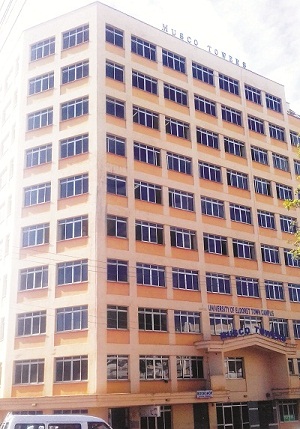By Sammy Chivanga
The regulator is now calling for the merger of various small Savings and Credit Cooperative Societies (Saccos) to bring stability and efficiency in the vibrant sector that holds over Sh380 billion in deposits.
Sacco Societies Regulatory Authority (Sasra) says that large Saccos are deepening the control of deposits – a key source of lending – and small players should consider merging to remain competitive.
The sentiments come on the back of some Saccos having lost their licenses while others had their licenses renewed but with conditions due to strained liquidity positions.
“A time has thus come for the Sacco subsector to start policy conversations and dialogues on voluntary consolidation and amalgamations of the many small DT-Saccos, for them to remain competitive and benefit from associated comparative advantages,” says Sasra.
This is seen as a way of saving members from the agony that befalls them when licenses of weak Saccos are revoked, leading to a painful liquidation process.
The process is usually marred with acrimony since it takes a long process for members to recover their savings and erodes the confidence of other Sacco members.
Between 2015 and last year, Sasra has revoked licenses of 14 DT-Saccos on account of failing to maintain the required levels of core capital.
Sasra regulations require, among other things that all DT-Saccos maintain at all times the prescribed minimum core capital of not less than Sh10 million.
They are also required to maintain a minimum of capital adequacy ratios of core capital to total assets, core capital to total deposits, and institutional capital to total assets of 10 per cent, eight per cent and eight per cent respectively.
Last year, saw the licenses of three DT-Saccos – Miliki, Nandi Hekima and Sukari – revoked for having weak core capital. This means they can no longer practice deposit-taking business as was the fate that befell Moi University and Nitunze Saccos in 2018.
The number of DT-Saccos with full licenses renewed for the ensuing year dropped to 160 last year from 162 in 2017. At the same time, 12 Saccos were given license renewal but with conditions attached since they were in breach of some ratios.
Sasra data shows that there are now 172 licensed DT-Saccos in contrast with 215 Saccos in 2012. This means 43 Saccos have dropped out during this period.
If the consolidation in the Sacco movement comes to pass, it will put small Saccos in the same boat with small banks, who are increasingly being bought out by large banks.
The Central Bank of Kenya has been open to the buyouts and mergers, saying that they are crucial for bringing stability in the sector.
However, with the strength of many Saccos founded on common bonds such as places of work or economic activity being pursued, the Sasra proposal risks being met with opposition.
Sasra warns that as the market share of small Saccos comes under pressure from large Saccos, they are at risk of folding up unless they opt for consolidation.
“In the absence of such consolidation and amalgamation initiatives, a time will come in the medium to long term when the market share of these small DT-SACCOs will be wiped out, thereby rendering them financially unviable,” warns Sasra.
Reaching such an undesirable point will lead to possible failure and inability to meet financial obligations such as deposit liabilities owed to members.
The regulator’s red lights come on the back of large Saccos deepening their share of deposits, which is a key source for lending to members.
According to Sasra, there are only 20 Saccos with deposits above Sh5 billion. This is about just an eighth of the total 172 DT-Saccos.
These 20 DT-Saccos controlled a cumulative total deposits of Sh224.75 billion last year, which accounted for more than half (59.08 percent) of the total deposits.
The analysis shows that more deposits are being concentrated in the few DT-Saccos with deposit size in excess of Sh5 billion as small Saccos struggle.
“It is imperative also to observe that a total of 99 DT-Saccos whose total deposits were below the Sh1 billion threshold controlled a paltry 8.4 per cent of the total deposits within the system,” notes Sasra.
The data lends credence to the conclusion by Sasra that there are in existence very many small DT-Saccos within the system.
Sasra places a lot of emphasis on deposits held by DT-Saccos because deposits represent the savings of members of the public which are held in trust by the DT-SACCOs and thus vulnerable to abuse.
Additionally, these deposits remain the most significant source of funding for the loans and other credit facilities issued by DT-Saccos at 90.7 per cent of gross loans portfolio last year.
Saccos run on a multiplier model, allowing members to borrow up to three times their savings, meaning that without sufficient deposit mobilization, their existence comes at a risk.



